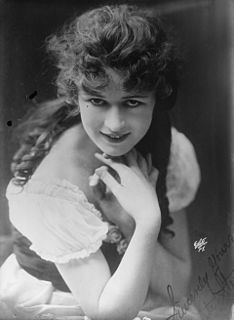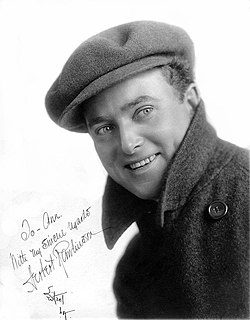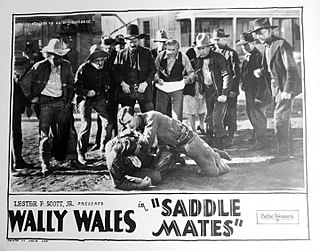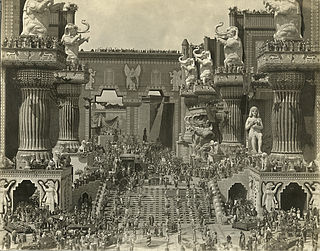Comedy is a genre of film in which the main emphasis is on humour. These films are designed to make the audience laugh through amusement and most often work by exaggerating characteristics for humorous effect. Films in this style traditionally have a happy ending. One of the oldest genres in film, some of the very first silent movies were comedies, as slapstick comedy often relies on visual depictions, without requiring sound. When sound films became more prevalent during the 1920s, comedy films took another swing, as laughter could result from burlesque situations but also dialogue.
The decade of the 1920s in film involved many significant films.

Blackmail is a 1929 British thriller drama film directed by Alfred Hitchcock and starring Anny Ondra, John Longden, and Cyril Ritchard. Based on the 1928 play of the same name by Charles Bennett, the film is about a London woman who is blackmailed after killing a man who tries to rape her.

The Singing Fool is a 1928 American musical drama Part-Talkie motion picture directed by Lloyd Bacon which was released by Warner Bros. The film stars Al Jolson and is a follow-up to his previous film, The Jazz Singer. It is credited with helping to cement the popularity of American films of both sound and the musical genre.
This article contains a list of cinematic techniques that are divided into categories and briefly described.

Anita Stewart was an American actress and film producer of the early silent film era.

Gordon S. Griffith was an American assistant director, film producer, and one of the first child actors in the American movie industry. Griffith worked in the film industry for five decades, acting in over 60 films, and surviving the transition from silent films to talkies—films with sound. During his acting career, he worked with Charles Chaplin, and was the first actor to portray Tarzan on film.
Phonofilm is an optical sound-on-film system developed by inventors Lee de Forest and Theodore Case in the 1920s.
Goat gland transplantation was a quack surgical treatment promoted by John R. Brinkley in the 1920s.

Herbert Banemann Rawlinson was an English-born stage, film, radio, and television actor. A leading man during Hollywood's silent film era, Rawlinson transitioned to character roles after the advent of sound films.
A part-talkie is a partly, and most often primarily, silent film which includes one or more synchronous sound sequences with audible dialog or singing. During the silent portions lines of dialog are presented as "titles" -- printed text briefly filling the screen—and the soundtrack is used only to supply musical accompaniment and sound effects.

The Man Who Laughs is a 1928 American silent romantic drama film directed by the German Expressionist filmmaker Paul Leni. The film is an adaptation of Victor Hugo's novel of the same name and stars Mary Philbin as the blind Dea and Conrad Veidt as Gwynplaine. The film is known for the grim carnival freak-like grin on the character Gwynplaine's face, which often leads it to be classified as a horror film. Film critic Roger Ebert stated, "The Man Who Laughs is a melodrama, at times even a swashbuckler, but so steeped in Expressionist gloom that it plays like a horror film."

Noah's Ark is a 1928 American epic romantic melodramatic disaster film directed by Michael Curtiz and starring Dolores Costello and George O'Brien. The story is by Darryl F. Zanuck. The film was released by the Warner Bros. studio. It is representative of the transition from silent movies to "talkies", although it is essentially a hybrid film known as a part-talkie, which used the new Vitaphone sound-on-disc system. Most scenes are silent with a synchronized music score and sound effects, in particular the biblical ones, while some scenes have dialogue.

Wally Wales was an American film actor who also appeared in many films under the name Hal Taliaferro. He appeared in more than 220 films between 1921 and 1964.
This is a complete list of animated films released theatrically starring Felix the Cat. "View" links are linked to a public domain file of the cartoon at archive.org or the official British Pathé archives at britishpathe.com.

The Terror is a 1928 early American, pre-Code, horror film written by Harvey Gates and directed by Roy Del Ruth, based on the play of the same name by Edgar Wallace. It was the second "all-talking" motion picture released by Warner Bros.. The film was also the first all-talking horror film, made using the Vitaphone sound-on-disc system.

Hollywood Cavalcade is a 1939 American film featuring Alice Faye as a young performer making her way in the early days of Hollywood, from slapstick silent pictures through the transition from silent to sound.
You'd Be Surprised! is a 1930 British musical comedy film directed by Walter Forde and starring Forde, Joy Windsor and Frank Stanmore. The film was shot at the Nettlefold Studios in Walton. It was made during the transition to sound film. Originally silent, it had synchronised songs and music added. A silent version was also released to cater to cinemas that hadn't converted to sound yet.












